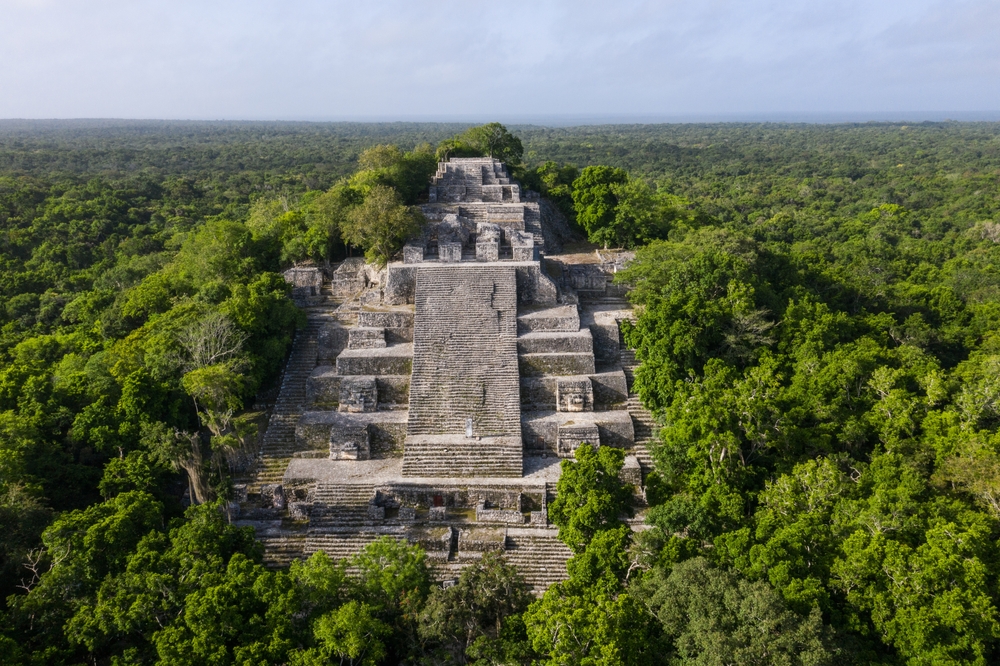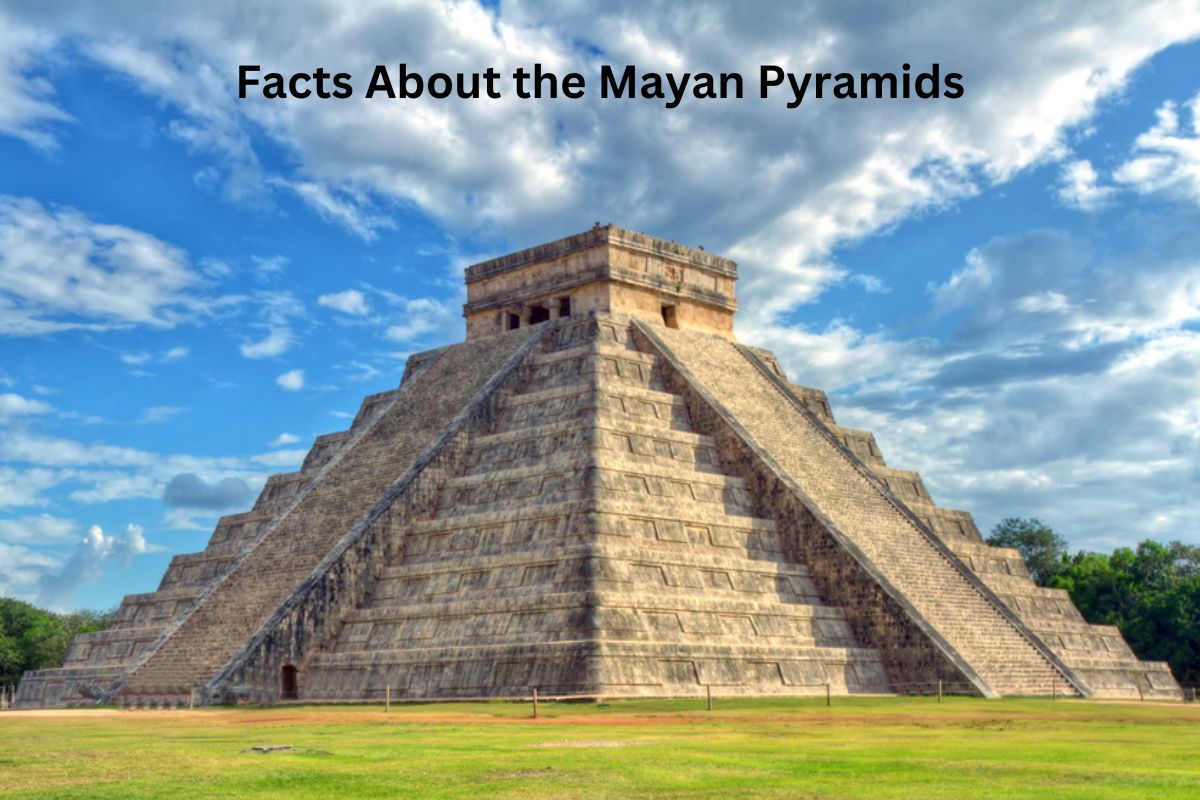The Mayan pyramids stand as enduring monuments to the remarkable achievements of the ancient Mayan civilization. These awe-inspiring structures were not merely grand architectural wonders but also held profound religious, astronomical, and cultural significance.
With their stepped-pyramid design and precise alignments with celestial events, the Mayan pyramids served as centers of worship, astronomical observatories, and focal points for human sacrifices.
Abandoned for centuries and later rediscovered, these pyramids offer a glimpse into the sophisticated knowledge and deep spiritual beliefs of the enigmatic Mayan civilization.
Join us on a journey to explore the fascinating world of the Mayan pyramids and uncover the mysteries they continue to hold.
Mayan Pyramids Facts
1. Built for religious and ceremonial purposes
Mayan pyramids were at the heart of the Mayan civilization’s religious and cultural life. They were considered sacred structures and played a central role in various religious rituals, ceremonies, and important events in the life of the community.
Also Read: Facts About Chichen Itza
These ceremonies often involved offerings to the gods, prayers for bountiful harvests, and propitiating divine beings to ensure the well-being of the people and their rulers.

2. Stepped-pyramid design with temples on top
The most common architectural form of Mayan pyramids was the stepped-pyramid design, also known as a “pyramid-temples.” These structures were built with multiple levels, each of which served a specific purpose.
Also Read: Teotihuacan Facts
A broad staircase led to the top platform, where a temple or shrine was erected to house religious artifacts or represent a specific deity. The number of steps could vary, often reflecting important numerical values in the Mayan cosmology.
3. Aligned with celestial events and the Mayan calendar
The Mayans were skilled astronomers and mathematicians, and they had a deep understanding of celestial cycles. Mayan pyramids were intentionally oriented to align with specific astronomical events, such as the solstices, equinoxes, and the positions of celestial bodies like the sun, moon, and Venus.
These alignments not only served religious and ceremonial purposes but also helped the Mayans in agricultural planning, marking important dates in the calendar, and affirming their connection with the cosmos and the gods.
The precision of these alignments showcases the Mayans’ advanced knowledge of astronomy and their ability to create structures that harmonized with the natural world.
4. Constructed with limestone blocks
Mayan pyramids were primarily built using limestone, a sedimentary rock abundant in the Yucatan Peninsula and other regions where the Mayan civilization flourished. Limestone was a practical choice for construction due to its availability and workability.
The Mayans quarried the stone from nearby sources and cut it into uniform blocks to create the structures. They also used lime-based mortar to join the stones, ensuring the stability and durability of the pyramids over time.
To enhance the visual appeal of the structures, the Mayans often plastered the exteriors and painted them in vibrant colors, turning the pyramids into colorful landmarks in their cities.
5. Vary in size based on the city’s importance
The size and complexity of Mayan pyramids varied depending on the significance of the city or site where they were constructed. Major urban centers with strong political and religious influence typically featured larger and more elaborately designed pyramids.
These grand pyramids symbolized the city’s power and prestige and often served as focal points for various social and religious activities.
In contrast, smaller settlements or less influential sites might have simpler, less massive pyramids, although they still held important religious significance for the local communities.

6. El Castillo in Chichen Itza is a famous Mayan pyramid
El Castillo, also known as the Temple of Kukulcan, is one of the most iconic Mayan pyramids. Located in the ancient city of Chichen Itza on the Yucatan Peninsula in Mexico, this pyramid is an impressive example of Mayan architecture and cosmological knowledge.
El Castillo is a step pyramid with four sides and 91 steps on each side, adding up to 364 steps when counting the top platform. Including the step at the temple’s entrance, the total number of steps reaches 365, representing the days in the solar year.
During the spring and autumn equinoxes, the play of sunlight and shadow creates the illusion of a serpent descending the pyramid’s staircase, a symbolic representation of the feathered serpent god Kukulcan.
7. Other renowned pyramids
In addition to El Castillo in Chichen Itza, several other Mayan pyramids have gained widespread recognition. One such example is the Pyramid of the Great Jaguar (Pyramid Temple I) in the ancient city of Tikal, Guatemala.
This pyramid is renowned for its imposing height and intricate architectural details, and it served as a prominent ceremonial center in Tikal, one of the most powerful Mayan city-states.
Another notable pyramid is the Temple of the Inscriptions in Palenque, Mexico. This pyramid houses a tomb believed to belong to the great Mayan ruler Pakal, and its inscriptions offer valuable insights into the Mayan hieroglyphic writing and history.
8. Used for human sacrifices
Human sacrifice was a significant aspect of Mayan religious practices, and many of the pyramids served as sites for these rituals. The Mayans believed that offering human blood to the gods was necessary to maintain the balance of the cosmos and ensure the continued existence of the world.
The sacrifices often involved captured enemies from warfare, criminals, or even volunteers. The ritual process could vary, but it typically involved the cutting out of the heart or the decapitation of the sacrificial victim.
After the sacrifice, the bodies were often thrown down the temple stairs or placed in ritual burials nearby. The act of sacrifice was believed to appease the gods and bring prosperity and protection to the community.
9. Some served as astronomical observatories
Besides their ceremonial and religious functions, some Mayan pyramids also served as astronomical observatories. The Mayans had a sophisticated understanding of celestial movements, and they closely observed the positions of the sun, moon, stars, and planets.
Certain pyramids were designed with specific architectural features that allowed the Mayans to track astronomical events accurately.
They could determine the solstices, equinoxes, and other significant celestial alignments, which were essential for their agricultural calendar, religious ceremonies, and cultural practices.
10. Many abandoned and later rediscovered
With the decline of the Mayan civilization around the 9th century AD, many of the once-flourishing cities were abandoned.
The reasons for the decline are subject to debate among historians and archaeologists, but factors such as environmental degradation, resource depletion, warfare, and political instability likely played significant roles.
As the Mayan cities were abandoned, they were gradually reclaimed by the dense jungle, which concealed the magnificent pyramids and other structures for centuries. It wasn’t until the 19th and 20th centuries that explorers and archaeologists began to rediscover and excavate these ancient sites, uncovering the rich history and architectural wonders of the Mayan civilization.
